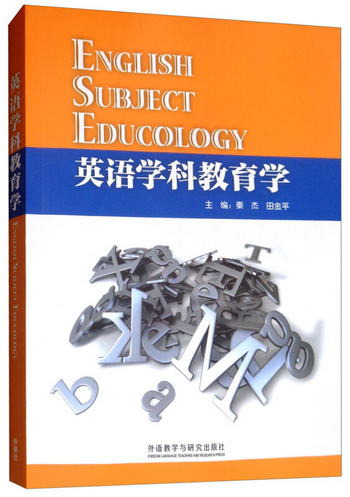| | | | 英語學科教育學 [English Subject Educology] | | 該商品所屬分類:圖書 -> 外語教學與研究出版社 | | 【市場價】 | 761-1104元 | | 【優惠價】 | 476-690元 | | 【作者】 | 秦傑田金平 | | 【出版社】 | 外語教學與研究出版社 | | 【ISBN】 | 9787560077444 | | 【折扣說明】 | 一次購物滿999元台幣免運費+贈品
一次購物滿2000元台幣95折+免運費+贈品
一次購物滿3000元台幣92折+免運費+贈品
一次購物滿4000元台幣88折+免運費+贈品
| | 【本期贈品】 | ①優質無紡布環保袋,做工棒!②品牌簽字筆 ③品牌手帕紙巾
|
|
| 版本 | 正版全新電子版PDF檔 | | 您已选择: | 正版全新 | 溫馨提示:如果有多種選項,請先選擇再點擊加入購物車。*. 電子圖書價格是0.69折,例如了得網價格是100元,電子書pdf的價格則是69元。
*. 購買電子書不支持貨到付款,購買時選擇atm或者超商、PayPal付款。付款後1-24小時內通過郵件傳輸給您。
*. 如果收到的電子書不滿意,可以聯絡我們退款。謝謝。 | | | |
| | 內容介紹 | |

出版社:外語教學與研究出版社 ISBN:9787560077444 版次:1 商品編碼:12504127 品牌:外研社 包裝:平裝 外文名稱:English 開本:16開 出版時間:2008-08-01 頁數:348 正文語種:英文 作者:秦傑,田金平
" 內容簡介 《英語學科教育學》作為英語學科教育的一本入門書既涉及宏觀的與英語教育學相關的學科理論知識,也涉及英語教育學理論與英語體繫,繼而聚焦在英語數學的課程論、學習論、教學論、評價理論和課堂實踐。全書共分九章。第一章作為全書的總括,介紹了英語教學論的基本範疇和概念,並且簡述了英語學習理論和教學模式。第二章詳細回顧了中外英語教學的歷史、教學法的流派、英語教學發展的現狀和任務型語言教學。第三章具體介紹了英語課程教學大綱的評價、選擇和設計等知識。第四章是書中的一章。本章包括了英語聽力、口語、閱讀、寫作、詞彙以及語法教學的理論與實踐知識。作為例釋,每個部分都提供了課堂教學設計的案例。第五章介紹了英語語言教學中的學習者因素,具體分為學習者的個體差異、情感因素、認知因素、學習風格和策略。第六章探討了英語教學中的文化意識。第七章集中在英語課堂教學的操控和管理,提供了英語教案的設計和課堂組織方面的知識。第八章介紹了英語語言測試的理論,調查了中國英語教學中測試的現狀,並且針對中國英語測試的改革提出了一些建議。第九章討論了英語教師的培訓和發展的問題。
全書用英語編寫,可作為英語專業教學法教材,其讀者對像主要為英語專業的本科生和研究生,此外也可供英語教師以及對英語教學感興趣的各界人士使用。 目錄 Acknowledgements
Chapter 1 Basic Concepts of English Language Educology
1 Introduction to English language educology
2 The study of education and its relation to language educology
3 Language acquisition/learning theories
4 A brief survey of English teaching models
Chapter 2 Survey of the History of English Teaching
1 Main schools of English teaching in history
2 Development of English teaching in China
3 Current trends in English teaching
4 A study on task-based language teaching
Chapter 3 English Syllabus Evaluation and Design
1 Definition of syllabus
2 Importance of syllabus
3 Different types of syllabi
4 Guidelines to syllabus choice/design
5 Evolution of English syllabi in China
Chapter 4 Teaching of Different Language Skills
1 Teaching of listening
2 Teaching of speaking
3 Teaching of reading
4 Teaching of writing
5 Teaching of grammar and vocabulary
Chapter 5 Learners’Variables in English Teaching
1 Personal differences
2 Affective domain
3 Cognitive styles
4 Learning strategies
5 Learning motivation
Chapter 6 Cultural Awareness and English Language Teaching
1 Relationship between culture and language
2 Culture in foreign language teaching
3 Instructional strategies for teaching culture
4 Problems faced by Chinese learners in English
culture learning and recommendations
Chapter 7 Classroom Practice
1 Lesson plan
2 Classroom management
3 Reflection and evaluation
Chapter 8 English Testing
1 Ways of assessing students
2 Testing systems
3 Relationship between language teaching and testing
4 Suggestions on testing
5 Web-based language testing
Chapter 9 Teacher Training in English Language Teaching
1 Good teachers and good teaching
2 Teacher training approaches 查看全部↓ 精彩書摘 《英語學科教育學》:
In the past decades, a great deal of attention has been paid to the particular language elements that are included in a syllabus and to the organizational system according to which they are presented.Discussions have typically considered the trade-offs, advantages, and disadvantages of the major syllabus types: the structural-grammatical syllabus, the semantic-notional syllabus, the functional syllabus and
the situational syllabus (Dubin & Olshtain, 1986).
In this section, we briefly introduce eight types of syllabi. It must be pointed out that although the different types of language teaching syllabi are treated here as though each occurred “purely”, in practice,they rarely occur independently of each other. Almost all actual language teaching syllabi are combinations of two or more of the types defined here. For a given course, one type of syllabus usually dominates, while other types of content may be combined with it.
Furthermore, different types of syllabi are not entirely distinct from each other. For example, the distinction between skill-based and task-based syllabi may be minimal. In such cases, the distinguishing factor
is often the way in which the instructional content is used in the actual teaching procedure.3.1.1 A structural (formal) syllabus
Based on Behaviorist Psychology and Structural Linguistics,the structural, grammatical or linguistic syllabus is centered round grammatical items. The content of language teaching is a collection of the forms and structures of the language being taught. Examples include nouns, verbs, adjectives, statements, questions, subordinate clauses, tenses, articles, and so on.
For many years, language teachers, syllabus designers and testers tend to think in terms of units of language. They also tend to think of these units as being organized in some way, with similar language bits being grouped together, on the grounds that a well-marshaled inventory will be more comprehensible to the learner than an unorgaruzed list (Palmer, 1974).
As a whole, structural syllabus designers tend to list things which can be easily systematized. According to the advocators of formal syllabi, the notion of grammatical analysis does not seem incomprehensible or absurd-even students can often identify verbs, nouns and so forth-and grammatical description gives thye impression that it is accurate, and factual. Having learnt paradigms and pattern sentences, learners are in a position to use this knowledge to generate their own sentences to express their own meanings.Although under what conditions this actually happens is another matter, structural syllabus has been a very popular one in foreign language teaching. Even today we can see its presence in many English textbooks in China.
…… 查看全部↓
" | | |
| | | | |
|




